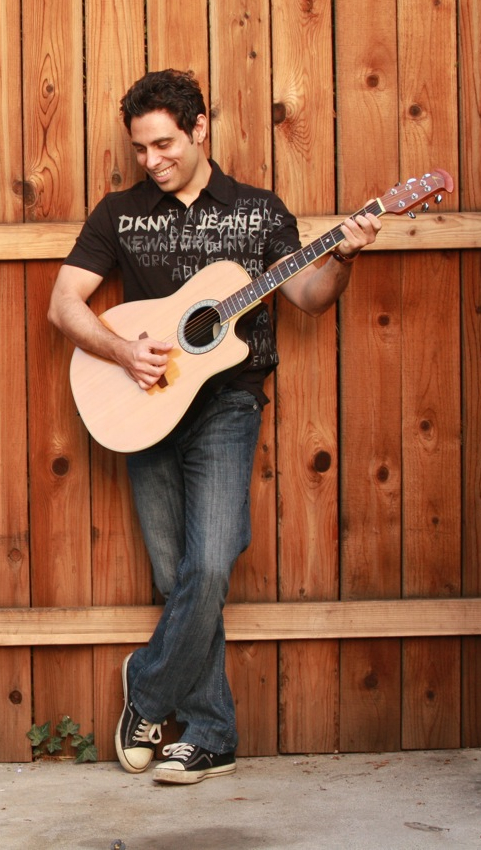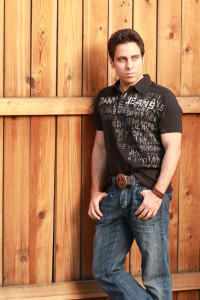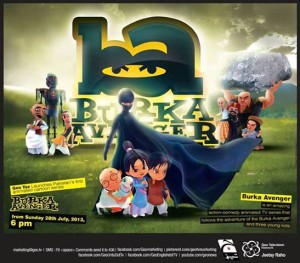by Sana Ahmad and Shafaq Khan
Iconic pop music pioneer, Haroon is more than his popular image of a singer, composer and song producer- he is also an entrepreneur and a philanthropist. In his candid interview with Bluechip Magazine, Haroon sheds light on his recent launch of the now globally viral animated series ‘Burka Avenger’, his work on designing Pakistan’s first social networking site to share music, and his work as campaign ambassador for Save The Children’s Everyone campaign.
s song that he simply fell in love with and it was in that particular moment he decided that he wanted to be a musician. Since then music has been a primary part of his life. He acquired his first guitar at the age of 13 which was when he started composing songs as well, and soon after, at the age of 14, he formed a band with his school friends called Idiosyncracies.
Right after his graduation in the early 1990s, Haroon formed a band called Awaz with fellow musicians Assad and Fakhir which was the first milestone in the launch of his music career. Awaz shot to fame with the video produced for their song ‘Janeman’, which Haroon had composed at the young age of 16. Haroon reminisced as he exclusively told Bluechip about how Awaz extensively tried selling this video locally but no channel showed interest in launching the song at the time. It was then that he contacted MTV Asia and sent them their video, which was much appreciated and went on to become the first ever Urdu (Pakistani) song to air on MTV internationally. This opened new avenues for the band as all the local channels which had previously rejected to launch their video now responded more positively towards them and Awaz started touring the world, making their mark at an international level as well. However, gradually the priorities of the other band members shifted and Haroon found himself the only one trying to carry ‘Awaz’ forward, which led to the eventual disintegration of the band.
Elaborating on his post-Awaz music experiences, Haroon’s first venture alone began with his first solo album ‘Haroon Ki Awaz’ in 2000 which he produced engineered and recorded himself. He said he enjoyed the process immensely because he likes to be involved in all aspects of his work and the autonomy that came with it. Later, Fakhir alongside Haroon launched his own solo album as well, due to which the rivalry was expansively highlighted by the media, creating a lot of controversy regarding the rivalry between the two singers which Haroon brushed aside as just rumors. However, he did amusingly confess that the much acclaimed controversy had a positive impact on both of their careers at that time.
Haroon is very actively involved in community and social work, and when inquired about his experience as the campaign ambassador for Save the Children’s ‘Everyone’ campaign, Haroon said his involvement with the campaign was an “eye-opener”. This campaign particularly focused on child health and nutrition and he further elaborated that endorsing the cause for these unprivileged children unearthed for him issues that he was otherwise unaware of such, as how 30% of the children in South Asia have an average life expectancy of 5 years. Haroon also shot a heartfelt and aspiring commercial video for the organization with a public message that aired on TV and the radio country wide, encouraging more people to actively participate in child welfare and eradicating other social downfalls such as poverty and illiteracy in children.
Commenting upon music not being given enough attention as a part of secondary school education, Haroon relates that it’s a shame because the youth these days are missing out immensely on something that would further help them emerge as well rounded individuals. “Music is food for the soul”, he added as he strongly feels that the opportunities, experiences and mental training that an individual can obtain from a musical education as well as other extra-curricular activities can contribute towards a more progressive thinking process. He expressed that close attention should be paid to the importance of having separate classes for music, sports and art for children at school level.
Moving on to his latest venture, the hit animated series ‘Burqa Avenger’, Haroon commented that the idea stemmed from the incessantly rising extremism that we are faced with today, particularly the violation of women rights and the anarchy against female education that is on a constant rise. He mentioned that he often encountered these issues whether it was on the news or if he was reading about it or the topic would generally come up in conversation. During that time, what particularly struck Haroon’s attention was the bombing of a girls’ schools by the Taliban, which eventually translated into the lead inception and story line of Burka Avenger’s lead character Jiya, a school teacher at an all girls’ school whose alter ego is a burka-clad superhero who fights against crime with her martial art takht kabadi using books and pens. In Haroon’s words ‘She fights for justice, peace and education for all…and she is no dork!’
When questioned about audience perception regarding the animated series, in the face of particular criticism from an unexpected source, Haroon explained the connotation behind the burqa as his heroine’s costume was not one of oppression or adversity but rather the freedom from any sort of sexual objectification that other female super heroine’s widely personify. Jia is not a damsel in distress, nor does she need validation from a man to complete her, nor is she overtly concerned with her physical appearance, but instead she fights for equality and peace, while masking her identity with her burqa. However, her alter ego is a teacher who doesn’t wear a hijab or a burqa; she is as Haroon affectionately puts it ‘a regular young lady’. The animated series has been widely appreciated globally, and an article appearing in the Huffington Post elaborates on how Disney’s female characters can learn several things from the character of Jia. 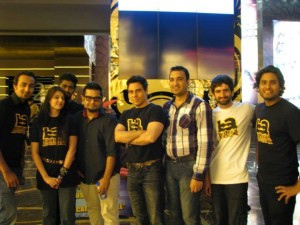
The series is set in a fictional small town called Halwapur somewhere situated in northern Pakistan. The lead character, Jia, is an expert in martial arts that she was taught by her adopted father, Kabbadi Jan. The other important characters include three children: twins, Ashu and Immu, and their friend Mooli, his pet goat Golu, Jiya’s and the villainous characters of magician Baba Bandook and the corrupt politician Vadero Pajero.
The series also features music from a range of accomplished artists like Ali Zafar, Ali Azmat, Adil Omar and Josh alongside Haroon himself. Unicorn Black, the producers, also produced an iPhone game for and a musical album including songs from the series in this production. Burka Avenger first aired on 28 July 2013 and continues to air on GEO Tez. The idea was conceived, created and directed by Haroon himself as he is actively involved in pretty much all the aspects for this production.
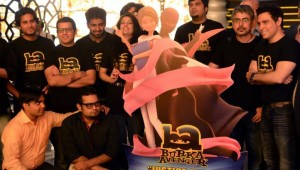
Haroon gets his inspiration from people who strive to bring about positive change in the world. He highlighted one such example being Nelson Mandela, whom Haroon admires for his selfless sacrifices. However, his primary role models have always been his parents. Since his mother is a New Zealander and his father a Pakistani, he considers himself fortunate to have had insight and exposure into both cultures and felt that he got the best of both worlds.
For Haroon, things are progressing forward with much gusto, as he is now looking forward to producing a Burqa Avenger movie and working with the Grammy award winning sound house, Freddie Fiction in L.A. He also looks forward to creating another cartoon series with a male super hero ‘ so the boys don’t feel left out’, and he is excited to launch his music sharing website to encourage local talent to share their music with everyone.



